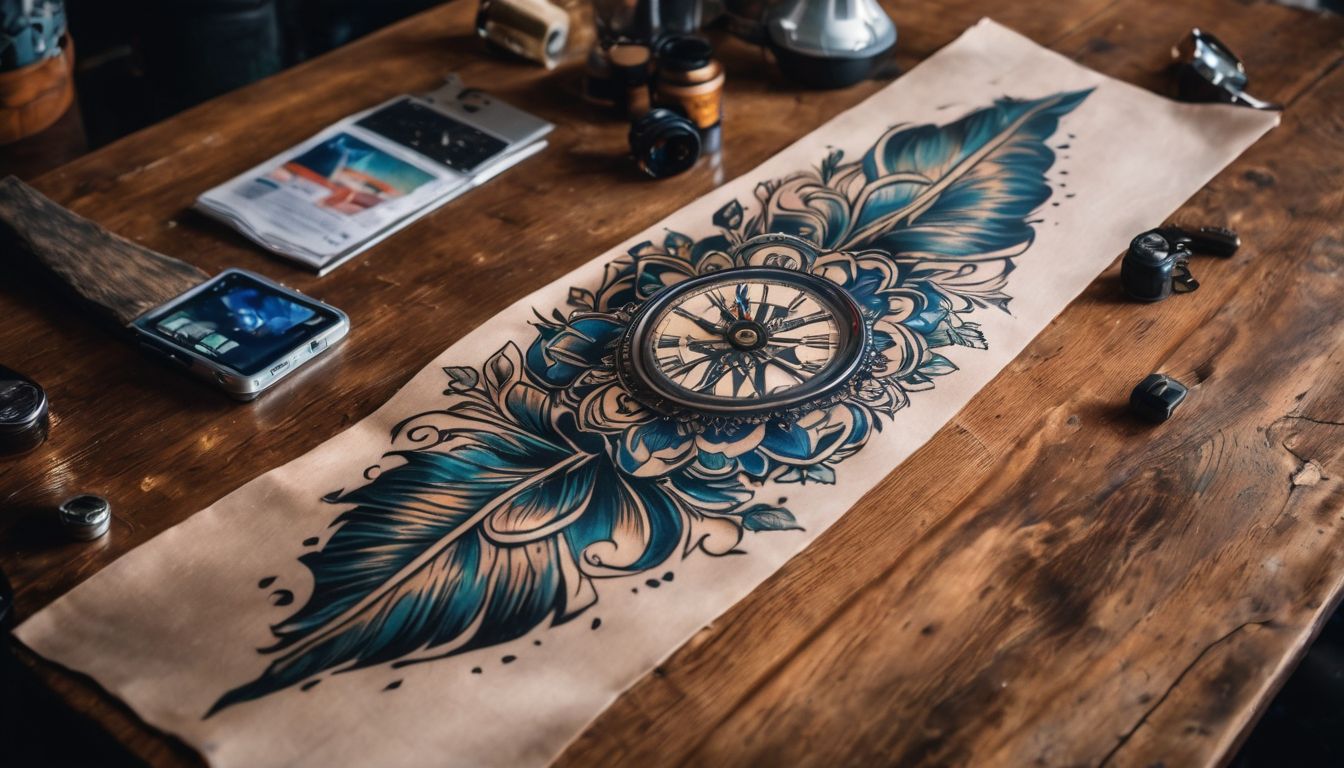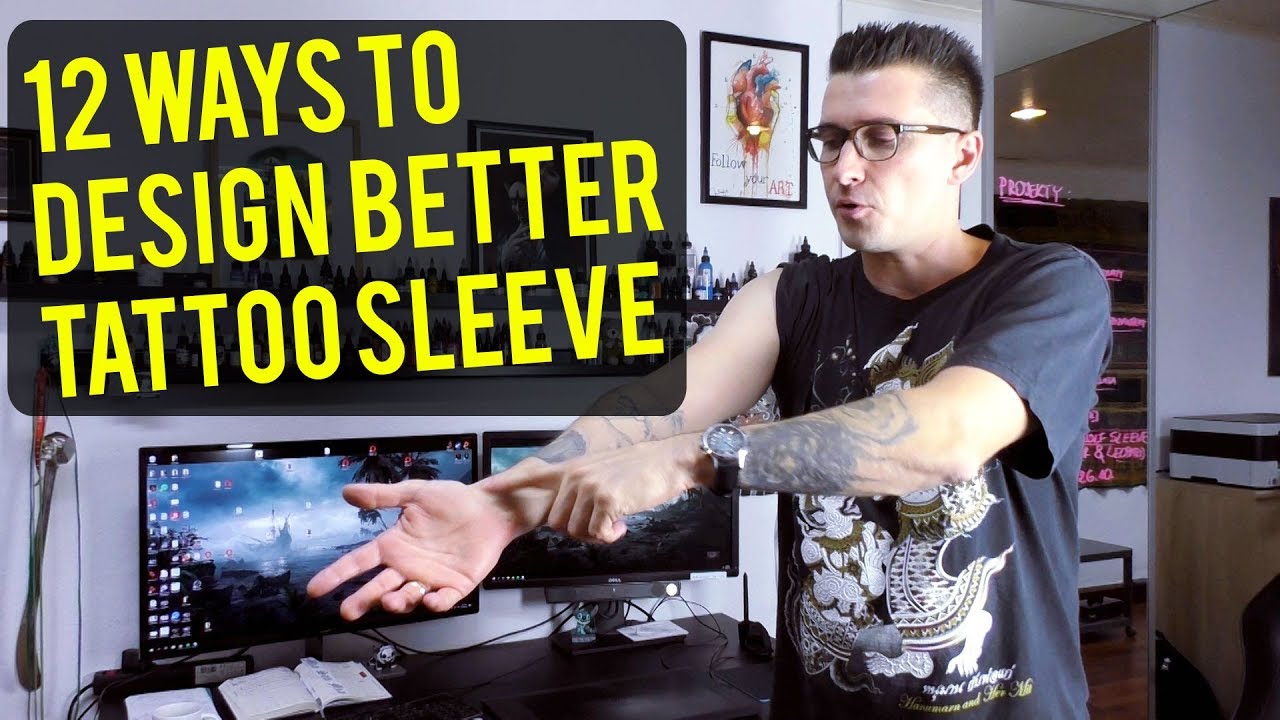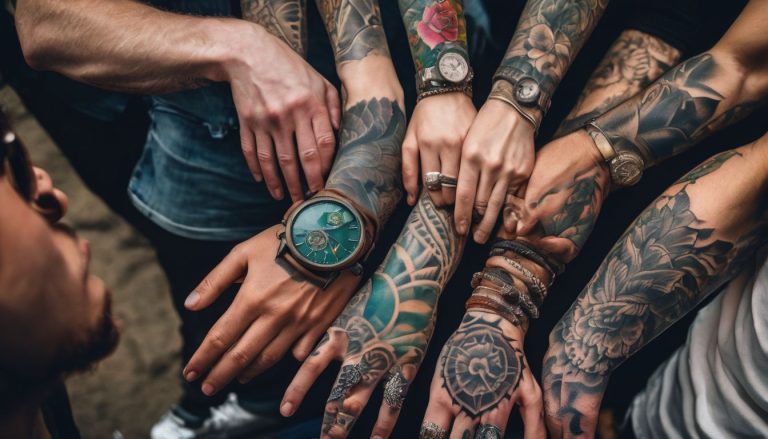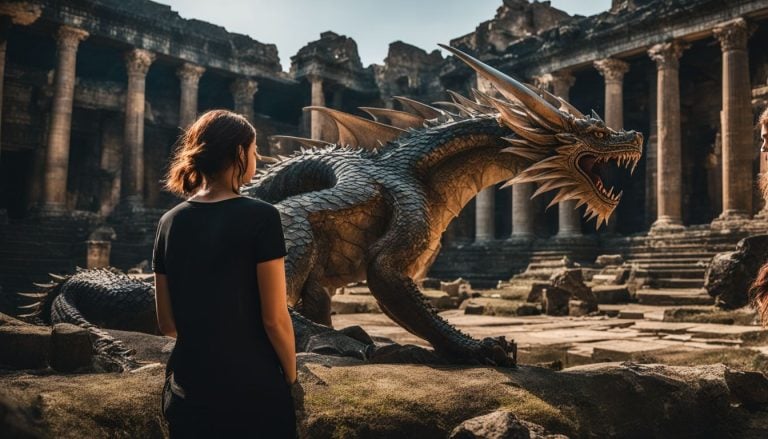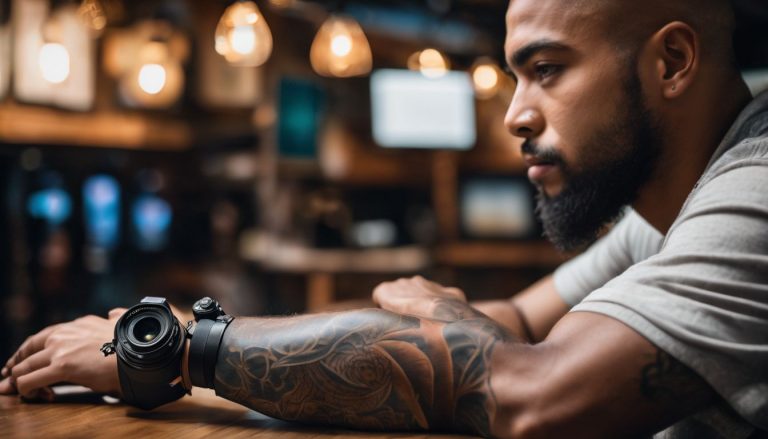Ultimate Guide to Tattoo Arm Sleeves: Designs, Meanings, and Tips
Create your own unique tattoos and art for your home
Deciding on a tattoo arm sleeve can leave you with lots of questions. Tattoo sleeves are not just bold fashion statements; they carry deep personal or cultural meanings. Our ultimate guide breaks down everything from design choices to aftercare, ensuring you make informed decisions for this lifelong art.
Dive in for all the ink-spiration you need!
Key Takeaways
- Tattoo arm sleeves are available in full, half, and three – quarter lengths with each type offering a different canvas for expression.
- Popular designs for tattoo sleeves include Viking, Japanese, black and grey styles; hearts and angels are common motifs that represent love and protection.
- The cost of a tattoo sleeve can range from several hundred to thousands of dollars depending on design complexity and artist experience.
- Getting a tattoo sleeve involves planning the design with an artist, undergoing multiple sessions, following strict aftercare routines to ensure proper healing.
- Despite being prohibited in certain professions like the USMC, tattoo sleeves continue to be popular among both men and women as a form of personal or cultural expression.
What Are Tattoo Arm Sleeves?
Tattoo arm sleeves are a type of body art that covers the entire arm with a design or motif. They come in different types, including full, half, and three-quarter sleeves, and can feature various styles and designs.
Definition
A tattoo arm sleeve is an extensive piece of body art that covers a significant portion of the arm, from shoulder to wrist or any variation in between. People choose full arm tattoo sleeves for a dramatic effect, while others prefer half sleeve tattoo ideas that cover either the upper or lower arm.
There’s also the three-quarter option that extends down just past the elbow. Each style wraps and contours with your body, creating a seamless tapestry of inked artwork.
Getting an arm sleeve involves planning key design elements and finding inspiration to convey personal significance or cultural symbolism. Whether you’re interested in realistic arm sleeve tattoos or more abstract designs, artists can help curate custom pieces tailored just for you.
These sleeves can take shape as one cohesive design or be built up over time through patchwork-style additions.
Types (full, half, three-quarter)
Tattoo arm sleeves come in different lengths, from full to half and three-quarter. Each type offers a unique canvas for expressing individual style and personality. Here’s a breakdown of each type:
- Full Sleeve: A full sleeve tattoo covers the entire arm, extending from the shoulder to the wrist and providing ample space for intricate and detailed designs.
- Half Sleeve: This type covers either the upper or lower half of the arm, offering flexibility in design placement and easily complementing existing tattoos.
- Three-Quarter Sleeve: Extending from the shoulder to just above the elbow or from the elbow to the wrist, a three-quarter sleeve provides a balanced look while allowing for creative design compositions.
Process of Getting a Tattoo Sleeve
Once you have the idea for your tattoo sleeve, the next step is to plan multiple sessions with a skilled tattoo artist to bring your vision to life. The process includes meticulous planning, careful tattooing, and proper aftercare to ensure the best results.
Idea creation process
When creating a tattoo sleeve idea, explore various design elements and styles that resonate with personal preferences. Consider meaningful symbols, themes, or imagery that hold significance to craft a personalized narrative within the tattoo sleeve.
Additionally, seek inspiration from diverse sources such as nature, mythology, cultural art, or personal experiences to develop a unique concept for the tattoo sleeve design.
Furthermore, communicate openly with the tattoo artist to exchange ideas and collaborate on bringing the envisioned concept to life. Engage in detailed discussions about color palette choices, placement of different elements within the design, and any specific customization requirements to ensure the final creation aligns with individual aesthetic preferences.
Sessions planning
When planning sessions for a tattoo sleeve, it is crucial to work closely with the tattoo artist. This involves discussing the overall design, number of sessions needed, and scheduling appointments.
The artist will advise on factors such as the complexity of the design and how long each session may take based on individual pain tolerance and skin sensitivity. Additionally, considering that full sleeves typically require multiple sittings for completion, coordinating these sessions in advance is essential in ensuring a cohesive and well-executed final product.
Understanding that proper aftercare plays an important role in preserving the tattoo’s integrity can help plan out suitable times for each session. It’s important to budget time accordingly for subsequent appointments to allow for healing between sessions while keeping your overall schedule in mind.
Tattooing process
After the idea and sessions planning comes the tattooing process. Skilled tattoo artists meticulously ink the chosen design onto your arm or leg using specialized equipment. Professional studios adhere to strict hygiene standards to ensure a safe and clean environment during the tattooing process, emphasizing your comfort throughout.
The artist will guide you through each step of the tattooing process, from prepping your skin to applying the final touches, ensuring that you have a positive experience. It’s important to follow their aftercare instructions closely for optimal healing and long-lasting results.
Throughout this involved process, clear communication with your artist is crucial; they will address any concerns and provide guidance on caring for your new sleeve. Just as importantly, remember not to rush but rather be patient in allowing ample time for each session – this will lead to a well-crafted final product that reflects both you and your artist’s dedication.
Proper aftercare
Proper aftercare of a tattoo sleeve is crucial for ensuring it heals well and looks vibrant for years to come. It involves the following steps:
- Keep the tattooed area clean and moisturized using fragrance – free, gentle products to aid in healing.
- Protect the tattoo from direct sunlight to prevent fading and damage to the skin.
- Avoid picking or scratching at the healing tattoo to prevent scarring or color loss.
- Follow any specific aftercare instructions provided by your tattoo artist, which may include avoiding swimming or strenuous activities for a certain period of time.
- Stay vigilant for signs of infection, such as excessive redness, swelling, or discharge, and seek medical attention if necessary.
Choosing a Tattoo Sleeve Design
Explore different styles such as Viking, Japanese, and black and grey tattoos, along with popular motives like hearts and angels to find the perfect design for your arm sleeve. Want to know more about the variety of designs and their meanings? Keep reading!
Different styles (Viking, Japanese, black and grey, etc.)
Tattoo sleeves come in various styles and designs, allowing individuals to express their unique personality and preferences. Here are some popular styles to consider:
- Viking: Reflecting strength and resilience, Viking tattoo sleeves often feature intricate knotwork, runes, and powerful Norse symbols.
- Japanese: Inspired by traditional Japanese art, these sleeves showcase iconic elements such as cherry blossoms, koi fish, dragons, and waves symbolizing strength and change.
- Black and Grey: Utilizing shades of black and grey ink, this style creates a striking contrast while emphasizing detailed imagery like portraits or realistic depictions of nature.
- Geometric: Known for its precise lines and captivating patterns, geometric tattoo sleeves often incorporate shapes and symmetrical designs to achieve a contemporary aesthetic.
- Traditional: Drawing from American traditional tattooing, this style encompasses bold outlines and vibrant colors, featuring classic motifs like roses, anchors, and eagles with symbolic meanings.
Popular motives (hearts, angels)
Hearts and angels are popular motives for tattoo arm sleeves, often symbolizing love, protection, and spirituality.
- Hearts:
- Represent love, passion, and romantic relationships.
- Can signify family or friendship bonds.
- Angels:
- Depict guardian figures watching over and protecting the wearer.
- Symbolize faith, hope, guidance, and spirituality.
- Combination Designs:
- Incorporating hearts and angels into a single tattoo sleeve can convey a blend of emotions and beliefs.
- Personal Significance:
- Many individuals choose these motives due to personal experiences or deeply held beliefs.
- Design Styles:
- Hearts and angels can be portrayed in various artistic styles like traditional, watercolor, or black and grey.
- Gender Neutrality:
- Both men and women opt for heart or angel motifs in their tattoo sleeves.
- Cultural Significance:
- In some cultures, hearts and angels hold specific traditional or religious symbolism.
- Customization:
- Tattoo artists can customize these motives to reflect the individual’s personality and beliefs.
- Applicability to Different Sleeve Types:
- Hearts and angels can be featured in full sleeves as well as half or three – quarter designs without losing their impact.
- Emotional Expression:
- Choosing hearts or angels for a tattoo sleeve allows wearers to express their emotions and sentiments through body art.
- Varied Meanings:
- While hearts commonly represent affection, angel tattoos can hold diverse meanings like remembrance or faith.
- Evolving Trends:
- The depiction of hearts and angels in tattoos has evolved over time with modern interpretations showcasing creativity and individuality.
- Tattoo Sleeve Cover-Up Option:
- Hearts or angel motives can also be used as part of a cover – up design due to their versatility in concealing old tattoos while providing deeper meanings for new ones.
Things to Consider Before Getting a Tattoo Sleeve
Before getting a tattoo sleeve, it’s important to have patience, communicate effectively with your artist, and take care of the rest of your body. To learn more about these considerations and other valuable tips for getting a tattoo arm sleeve, keep reading our ultimate guide.
Patience
Achieving the perfect tattoo arm sleeve requires patience. It’s essential to take the time to find the right design that reflects your personality and values. Furthermore, giving the artist sufficient time to bring your vision to life is crucial for a well-executed tattoo sleeve.
Investing patience in understanding the process of getting a tattoo sleeve can ensure a satisfying outcome. Taking sufficient time for aftercare and letting the tattoo heal properly is also key to preserving its quality over time.
Communication with artist
When communicating with the tattoo artist, it’s crucial to express your ideas clearly and openly. Discuss the design style, size, and placement of the sleeve tattoo during initial consultations.
Ensure that you convey any personal significance or cultural symbolism associated with the chosen elements.
Establishing effective communication with your artist will help in creating a custom tattoo sleeve that resonates with your vision and meaning. Incorporate feedback from the artist into the design process to achieve a cohesive and visually appealing arm sleeve that reflects your desired aesthetic while considering their professional expertise.
Taking care of rest
Taking care of rest after getting a tattoo sleeve is crucial for proper healing. It is recommended to keep the tattooed area clean and hydrated by applying a thin layer of unscented lotion as needed, avoiding picking at scabs or peeling skin.
Wearing loose clothing can prevent irritation, and protecting the tattoo from direct sunlight helps maintain its vibrancy. Additionally, following the aftercare instructions provided by the tattoo artist is essential for ensuring that the new sleeve tattoo heals properly.
Remembering to avoid swimming or soaking in water for a few weeks and refraining from intense physical activities can promote healing and prevent complications such as infection or color loss.
FAQ About Tattoo Sleeves
What is the cost of getting a tattoo sleeve? How painful is the process? Did you know that tattoo sleeves are prohibited in the USMC? Read on to find out more interesting facts and commonly asked questions about tattoo arm sleeves.
Cost
The cost of a tattoo sleeve can vary based on factors such as the size, intricacy of the design, and the experience of the tattoo artist. Full sleeves generally require multiple sessions and may cost several hundred to thousands of dollars.
Custom designs or incorporating intricate details like hyperrealistic tattoos can also add to the overall cost. It’s important to discuss pricing with your tattoo artist upfront and factor in additional expenses for aftercare products and touch-up sessions if needed.
Considering the long-term investment involved in getting a tattoo sleeve, it’s crucial to prioritize quality over cost. Researching various artists’ portfolios and understanding their pricing structure will give you an idea of what to expect financially.
Pain level
When considering getting a tattoo sleeve, it’s essential to acknowledge the pain level involved in the process. While pain tolerance varies among individuals, it’s important to be prepared for discomfort as tattoos involve needles penetrating the skin.
However, many find that the results are worth enduring this temporary discomfort. Keeping in mind proper aftercare and selecting an experienced tattoo artist can contribute to a more manageable pain experience during the process.
Getting a tattoo sleeve involves some level of pain due to the nature of the procedure. However, with adequate preparation and by choosing a reputable artist who prioritizes client comfort, individuals can navigate through this aspect of getting inked with greater ease.
Interesting facts (prohibited in USMC, popular amongst women)
Tattoo arm sleeves are prohibited in the United States Marine Corps (USMC) due to their policy governing visible tattoos. However, despite this prohibition, tattoo arm sleeves remain a popular choice among women.
The trend has gained traction and popularity for its artistic expression and ability to create stunning visual effects on the arms or legs. This form of body art allows individuals to showcase intricate designs that hold personal meaning or cultural significance while making a bold statement with a sleeve tattoo.
Conclusion
In conclusion, consider the significance of the design before getting a tattoo sleeve. Prioritize communication with your artist for an efficient process. Embrace patience during sessions and proper aftercare to ensure a successful result.
Explore different styles and motives before finalizing your decision for an artistic expression on your arm or leg.
FAQs
1. What are tattoo arm sleeves?
Tattoo arm sleeves are large tattoos or collections of smaller tattoos that cover most or all of the arm, from shoulder to wrist, with various designs and meanings.
2. Can I try an arm sleeve design before getting a permanent tattoo?
Yes, you can use temporary tattoos or stretchable fabric compression arm sleeves with tattoo designs to see how they look on your arm before making a decision.
3. Are there different tattoo sleeve designs for men and women?
Although certain styles might be more common among men or women, there’s a huge variety of tattoo sleeve ideas suitable for anyone interested in getting one.
4. How do I choose the right design for my tattoo sleeve?
Consider looking at many tattoo design ideas, think about what’s meaningful to you, and talk with a professional artist who can craft something unique that represents your personal story.
5. What should I keep in mind when caring for my new tattoo sleeve?
Follow the aftercare tips given by your artist; keep your new ink clean, moisturized, out of direct sunlight and avoid scratching to ensure proper healing and maintain the visual quality of your tatoo sleeve.

